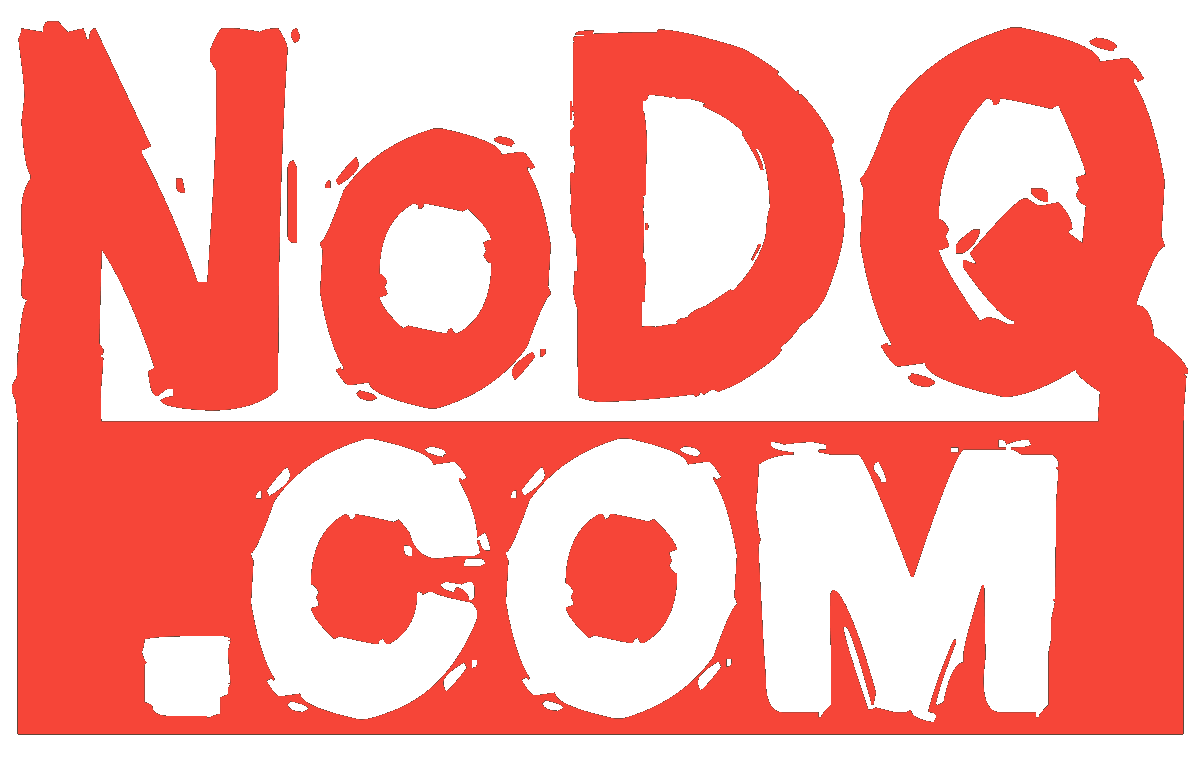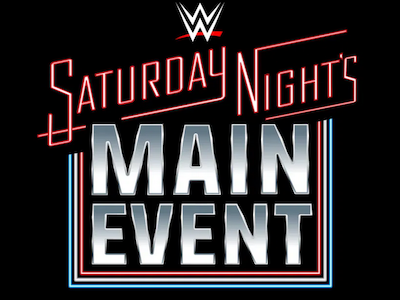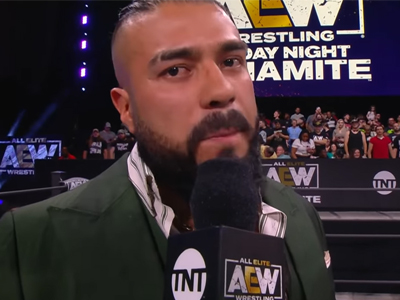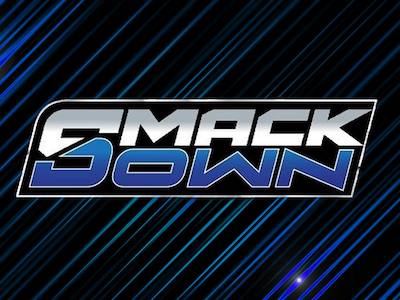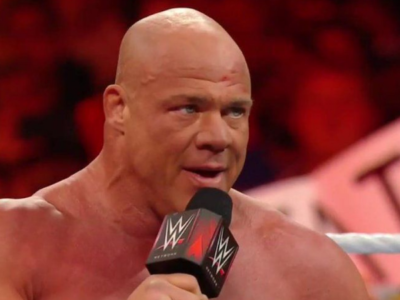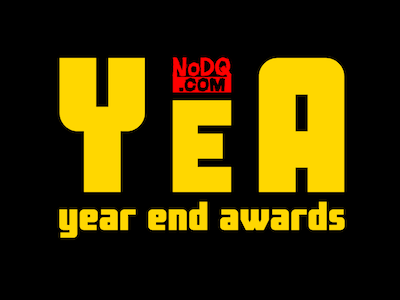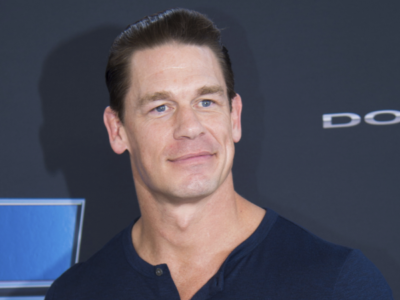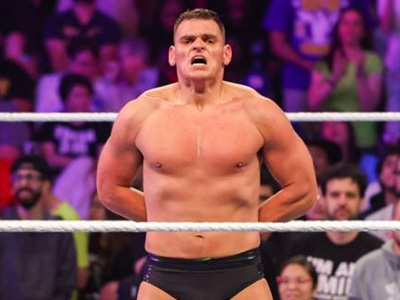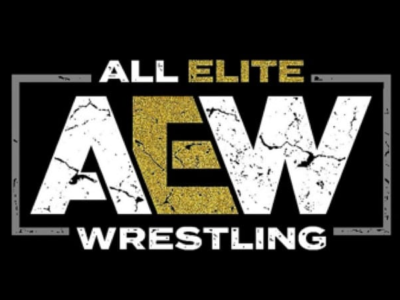Five reasons why AEW is NOT the future of wrestling – Part 1
When All Elite Wrestling (AEW) was formed in 2019, the new promotion quickly burst onto the American pro-wrestling market and into the hearts of many fans who were burnt out or fed up with the product and wanted change. The genesis of AEW was quick to shake up the still waters and suddenly there was a possibility of industry leaders World Wrestling Entertainment (WWE) finally getting a widely available mainstream alternative, or perhaps even direct competition, for the first time in the 21st century.
The puzzle pieces were all in their place. AEW had billionaire owners (who, much unlike the Carter-family for Impact Wrestling or media giant Sinclair for Ring of Honor, were actually willing to spend top dollar on the brand). They quickly reached a most valuable prime-time television deal with a well-known national cable channel. They were able to sign most of the prime free agent wrestlers on the American market, that had been realistically available to them, including a group of Cody Rhodes, Kenny Omega and the Young Bucks, who just months before were capable of selling over 10k tickets (with the support of ROH) for a non-WWE wrestling event in the United States (All In), which was a coup not seen since the downfall of WCW. They had excellent wrestling minds working for them behind the scenes. They had a ton of goodwill from the audience, who were more than willing to forgive them for initial hiccups and growing pains. And there was a significant level of disillusionment towards WWE, which – despite excellent revenue numbers – had long been on a downward trend regarding direct-to-consumer business results (as in viewership, attendance and merchandise sales).
Since then, 4 years have passed and let’s make something very clear: AEW is pretty much still a startup and has achieved lots of relative success in their formative years. Their media partners are happy with them, they get lots of attention and an increasing amount of TV-time, even the Warner-Discovery merger didn’t hurt them or affect them negatively, even though many in the game were worried about that one, remembering WCW’s eventual fate after all the ownership mergers back in the day. The promotion offers a very real alternative for all of the workforce in this business that doesn’t pursue WWE. They have been doing well in terms of PPV-buyrates and they hit some amazing homeruns, like conquering the Wembley Stadium in London. They survived the hellish time of the COVID-19 pandemic relatively unscathed, so well in fact, that at the end of 2021 and in the early part of 2022 I was confident enough to say they had the best wrestling product on the US market. It sure seemed like growing pains were a thing of the past and time was playing into their hands.
However, trends have shifted. Since last summer, WWE’s television viewership has increased 5-10%, according to Nielsen data, on a market marred by general downward trends, while AEW’s average viewership has seen a decline, even in the 18-49 demo, of which they were so proud for so long – and where they even directly competed with WWE for a while. In terms of ticket sales, we see WWE bringing in more fans to live events on any given market, despite their brutal prices (according to WrestleTix data, they draw about 1-3k more fans everywhere, compared to their last visit). In contrary to that, AEW has been struggling with ticket sales in most of their markets, sometimes drawing thousands less than previously, unless they are putting on special events. These are no longer accidental or temporary trends, that stay within the margins of error. The honeymoon period is over. AEW can no longer rely on the power of being brand new, fresh and getting all the protest votes from wrestling fans all over America.
What could be the reason for AEW being stuck in their own shadow, after starting out with such high promise? Why can’t they gain new ground and convince new people to watch and invest? To make it simple: why has it become obvious that without system-wide changes, All Elite Wrestling will never be the future of the wrestling business? In my series of opinion pieces, I will give you five strong reasons for that. Today marks Part 1.
REASON 1: WEAK AND DYSFUNCTIONAL LEADERSHIP
“The fish stinks from the head” – as they say, so I must begin dissecting the issues here myself. In our case it means that the existing hierarchy and leadership structure of AEW seems ill suited to manage the everyday challenges of a wrestling company. Not because Tony Khan has any bad intentions and certainly not because he is running an evil, oppressive corporate machine there. This problem is simply due to the fact that Tony is not an efficient, mature leader, but rather a childhood fan living his dreams, a billionare’s brat who had gone off to swim with sharks and thought he could be their friend.
I truly believe that Tony genuinely meant to create the most idyllic, most supportive, wrestler- and fan friendly promotion of all time, where everyone can spread their wings, where they get the freedom to perform their art to the best of their abilities, a place that would never become a toxic nest of snakes behind the scenes. He loves his job in a spectacular manner, he loves being around the wrestlers, I don’t think he is putting on a PR-stunt when he is emotionally hugging them in front of the camera. To this day, I firmly believe that deep down, Tony Khan honestly means well as a human being – and that’s sort of the problem, as he keeps going down the primrose path, or as they say it in my language: even the road to hell is built from bricks of goodwill.
As a leader, Tony wants an environment, where everybody gets along, where there are no interpersonal feuds, or conflicts of interest, where he doesn’t have to answer uncomfortable questions, take charge with a firm hand and handle all the drama. After having spent 12 years in the locker room of a wrestling promotion, allow me to say this: no such thing exists in our profession, especially long term. It’s utopia. Wrestlers are incapable of functioning as a self-governing commune, purely because of the nature of the beast.
I have no doubts that the concept initially worked. Wrestlers signed by AEW were overjoyed by getting an opportunity that used to be a faraway dream. A secure job on a big stage, with good salaries, this is our big chance that we hustled for on the independents, or that we would never get from WWE for some reason. For others, who were disillusioned with WWE, this was a new opportunity to get a fresh start and prove themselves again, or even stick it to their former employers. Even if the wrestlers had a fundamentally different idea about what wrestling should be, they were bound together by the sense of being on a mission together, creating something new and something big. Just watch us fly!
How do I know this? Well, I actually got to experience the very same thing when I started working for Hungarian Championship Wrestling (HCW) in Budapest, back in 2011. It’s hard to describe the sense of camaraderie, fellowship and belonging, that was driven by having an opportunity to step in the ring, in front of the people, after having been wrestling fans all our lives, and working for the same goal of bringing our favorite sport back to our country for the first time since the 1940s, before the decades of USSR influence stripped it all away. We were already having different ideas about wrestling, there was a noticeable rift between members of the crew who mainly fancied mainstream wrestling and those who loved the independents, but we set our differences aside for the common goal, and for a while it worked so well that many different people having a say in what we did wasn’t even a hindrance. However, these rifts don’t cease to exist, just because they are temporarily overlooked or swept under the rug. When the stakes get bigger, roadblocks are coming and it’s not clear what to do next, the kind, selfless and altruistic wrestlers inevitably start pulling the ship into a hundred different directions, going into business for themselves, and serving their own interests in rather gross or sneaky ways. At times like this, wrestling companies desperately need leaders or management that can handle the locker room, and gently herd or firmly direct them towards fulfilling the most important interest at play: that of the promotion itself.
When AEW was formed, Tony Khan handed out Executive Vice President (EVP) roles to the 4 key players in All In’s success and mostly relied on them with the decision-making regarding the craft. Cody Rhodes and the trio known as the Elite had a huge say in assembling the roster and the staff, also exerting their influence over the contents of the show and the booking process. The promotion pretty much hired anybody they suggested. Cody was coming up with storylines, initially for the whole promotion and later only himself. Omega was fooling around with the women’s division and the Young Bucks with the tag division, without much quality control. The veteran legend and inaugural AEW World Champion Chris Jericho can be considered an unofficial fifth member of the group, due to having Tony Khan’s ear from the start (even though he refused the EVP position). This whole concept proved to be such a misstep that even Tony himself had to reconsider it later.
It’s a general rule in wrestling, that unless it cannot be avoided, do not put active wrestlers in positions of power, because it seldom works. It may be less detrimental for a small, independent promotion (and they most often don’t have a choice), because there the wrestler/promoter is risking his own money and thus they have to be careful, but on a bigger stage, where the player/manager doesn’t have financial accountability, this may cause significant issues, because a performer’s perspective and ego is hard to reconcile with leadership thinking. The former only thinks about what benefits him, while the latter needs to consider what benefits the whole product, sometimes disregarding their own personal convictions as well. On an individual level, the wrestler/leader may abuse his power and put himself center stage, but overcompensating to keep a humble profile is also a real possibility. In AEW, we have seen a unique hybrid of that: Cody cut himself off from going for the world title with a rushed stipulation, while the Bucks and Omega were taking pointless losses and hiding away in the tag division. They didn’t overpush themselves at first as performers, but their perspective on wresting was indeed forced onto the segments of the product that they controlled.
This was equivalent to a double fault, because despite Cody’s past work with WWE, Omega’s major success in Japan, and the crazy guerilla-fame of the Young Bucks, this was actually the first time they performed on a national, mainstream platform as your top players. Due to them keeping a safe distance from those big time roles in the all-important early stages of the company, they diminished their own value as performers, because the casual fan, who was just getting to know them here, didn’t get the perception of them that they were main event talent. They obviously played those roles later, but by that time, only the core audience cared. And in the meantime, the TV shows have become a rather uncompromising mix of Cody’s preferred style of modernized NWA wrestling, the shades of Pro Wrestling Guerilla (PWG) that the Bucks brought in, and Omega’s weird Japanese-fetishes. This whole mush was then poured into a strange melting pot that was supposed to blend all the chaos and wild, wild west of late 90s wrestling, with all the postmodern workrate-based wrestling styles. AEW’s television shows have never, ever had a clear overall identity, that they could have waved as the marketing flag of the company. Telling the audience that they have something for every single sort of wrestling fan, sounds good on paper, but it’s in fact counter-productive, if you happen to enjoy a third of the show, and the other two-thirds are so different that it may be indigestible for some. Tony watched this happen and even encouraged it for a while.
An additional problem was that neither Tony, nor the EVP wrestlers had any experience in writing and producing wrestling for a national television audience, but they never allowed any people near the creative decisions who actually may have had a clue about that and they still haven’t done that to this very day, which is another leadership mistake. When it became clear even to Tony, that the previous model hadn’t been working, his solution – again – was not listening to different people for once, but rather taking all the responsibility for himself, even though he wasn’t more than an armchair booker in his own right, like a fan who does fantasy stuff. All of a sudden he had to manage 5-to-9 hours of weekly content largely by himself. The same lack of experience and know-how played a role in talent relations issues as well, because the people who were trying to manage a quite bloated roster consisting of a bunch of guys and girls with very different backgrounds, also had zero managerial or office experience at this level.
This inevitably led to a mismanaged product AND locker room, with both getting out of hand, and no leadership to control it. It also doesn’t help that due to the large influence of certain wrestlers, there is major nepotism running rampant in AEW from the get-go. We can point the finger at a ton of wrestlers who would never be on national TV (or even on the payroll) without the Elite, and thus they are in their back pockets, but we can find the pals of Jericho all the same, and even Cody used to have his own little posse that sort of fizzled out since his departure from the company. Of course, the good samaritan Tony Khan is paying them, but these people are not loyal to him, or his promotion, but to the people whose influence landed them there in the first place. And if something is not to their liking, or doesn’t serve their interests, these wrestlers can count on their backup and their part of the locker room sticking up for them personally. Why do you think CM Punk was adamant for so long to have Ace Steel, or just his own circle around himself? Because he knows how the game is played and wants to protect his back.
The person who still doesn’t understand how the game is played is Tony Khan. Of course, he is not alone with that, Dixie Carter never understood it, either. Tony just wants to play with his shiny toys and cannot even fathom why he gets bit. He just ran into the woods with his eyes and mouth wide open. There has never been a major conflict in his promotion that he was able to properly subdue or resolve. The rumored rift between Cody and the Elite got settled through Rhodes’ jumping ship. The issues between Britt Baker and Thunder Rosa only calmed down with Rosa’s persistent injury troubles, the tantrum of Andrade and Sammy Guevara led to El Idolo being shelved indefinitely, up until Collision happened, and as far as the CM Punk-Elite beef goes, it seems like their best solution was putting every offended party on different shows and sending them to different locker rooms, creating the funniest ’soft brand split’ ever, just because they are mad at each other. Actual mediation, resolving conflicts, leaders firmly taking charge of situations and timely interventions when neccesary – these things are nowhere to be seen. Issues settled through making peace, enforcing a ceasefire or putting professionalism first are also nowhere to be seen. Sweeping issues under the rug, constant delays in confronting problems, and actions lacking any real consequences are the norm. Unfortunately, a pro-wrestling locker room that is managed this way, is maybe one step above pure anarchy. Despite all of their misdeeds and faults, can you imagine Vince McMahon or Triple H allowing personal conflicts to fester to that point, reaching kindergarden feud levels? Do they end this with: „okay, we’re never working again” and leave it at that? Of course not. If there is no other way, they would pick a side, let the other person go and that’s it. But I shall tell you one better: most of these conflicts wouldn’t even go straight to high management, because part of the reason they have talent relations people and veteran agents working for them, is to resolve these issues way sooner than that. Of course, if your people lack proper authority and respect in the eyes of the locker room, it’s tough to do that.
Wrestlers are called ’workers’ for a very good reason. An inherent part of the profession is to manipulate people. You have to make thousands in the arena and millions at home believe that the pain is almost killing you, when you are absolutely fine. You also make them believe that you are an alpha male and a genius, when all your life you have been a shy, introverted little nerd (and there’s nothing wrong with that, I happen to be one myself). Wrestlers are in their element when they are pretending to be something they are not (but wish to be) and in some cases they even confuse the roles they play with reality.
’Working’ others, selling them b.s is just as easy as taking a breath, and I’m not saying this to vilify wrestlers, it’s just a fact, an occupational disease of sorts. Even a 3-year old child takes a crash-course in politics if you allow him/her in a sandbox with others. We’re used to working everyone, all the time, according to the old saying, the boys work each other way more than the fans. And most wrestlers immediately smell blood if they are faced with weakness or naivety. If someone goes into a wrestling enviroment unprepared, inexperienced and always in the best of faiths, while surrounded by cunning old foxes (like Jericho), they get eaten alive for breakfast, wrapped around their little fingers, and manipulated to death without even noticing it. Tony Khan is this person right now. He doesn’t control his locker room, the locker room controls him. Spectacularly so.
This wraps up the first episode of the series, but it’s just the tip of the iceberg here. In the next article I’m going to take a look at AEW deliberately ignoring the already established know-how of the wrestling business, and how that hurts their prospective growth.
